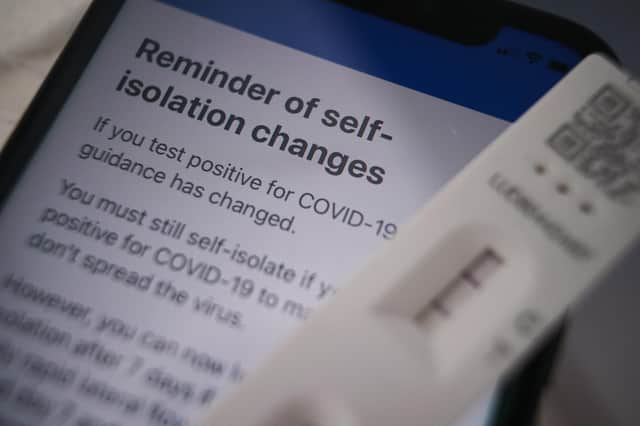One in fifteen in Yorkshire and the Humber had Covid between Christmas and New Year, data suggests


Data from the Office for National Statistics shows that only London with one in ten people infected in the seven days to December 31 had higher rates, while the North West was recording the same one in 15 rate.
Yorkshire’s one in 15 rate of infection was a jump from the one in 35 reported the week previously.
Advertisement
Hide AdAdvertisement
Hide AdThe figures were mirrored nationally, with the Yorkshire figure the same rate of infection as reported as the average across England.
All parts of the country saw a steep jump in infections in the seven days to December 31, with one in 20 people estimated to have the virus in Scotland and Wales, along with one in 25 in Northern Ireland.
In total an estimated 3.7 million people in the UK had Covid-19 in the week to New Year’s Eve, up from 2.3 million in the week to December 23 and the highest number since comparable figures began in autumn 2020, according to the Office for National Statistics (ONS).
South-west England had the lowest estimate for the week to December 31, one in 30, up from one in 40 in the previous week.
Advertisement
Hide AdAdvertisement
Hide AdParts of Northern Ireland are currently recording the highest rates of infection in the UK, according to the Government’s official data dashboard.
Derry City & Strabane has the highest rate in the country, with 6,680 new cases in the seven days to January 1, the equivalent of 4,420.6 per 100,000 people.
The figures have emerged as daily case totals continue to tally well into six figures, with another 94,747 lab-confirmed Covid-19 cases have been recorded in the UK as of 9am on
Wednesday, while 334 more deaths were recorded – although this figure includes a backlog of hospital data from England since January 1.
Advertisement
Hide AdAdvertisement
Hide AdGovernment figures also showed a total of 17,276 people were in hospital in the UK with Covid-19 as of January 4, up 58% week-on-week – although far below the peak of almost 40,000 in January 2021.
Meanwhile, Labour leader Sir Keir Starmer tested positive for the second time in less than three months yesterday, keeping him away from the House of Commons for the first Prime Minister’s Questions session after the Christmas break.
Sir Keir is not thought to have any Covid-19 symptoms but the infection was picked up as part of his regular testing routine.
This latest positive test will mean it is the sixth period of self-isolation for the Labour leader since the start of the pandemic.
Advertisement
Hide AdAdvertisement
Hide AdThere were a number of changes announced to testing rules yesterday, both for people hoping to travel abroad, and people needing to test at home in the coming weeks. Plans will be implemented across the UK to end the requirement for confirmatory PCR tests for asymptomatic people who test positive using a lateral flow device.
The change is aimed at freeing up laboratory capacity for PCR tests, with the requirement for confirmatory tests suspended in asymptomatic people until the current high levels of infections subside.
Ministers also approved changes to the travel regime for England, with the requirement for pre-departure tests scrapped from 4am on Friday.
Boris Johnson also said the requirement to self-isolate on arrival until receipt of a negative PCR test on arrival was being scrapped, returning instead to the system in place in October last year.
This means that travellers will need to take a lateral flow test no later than the end of day two after arriving in England, with a PCR if they are positive.